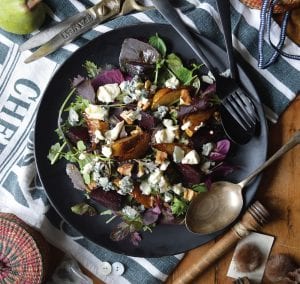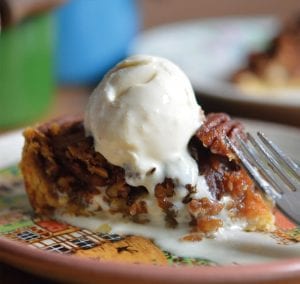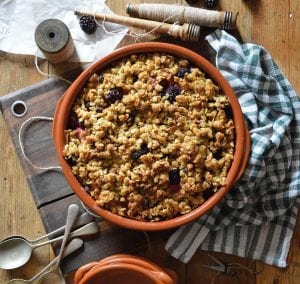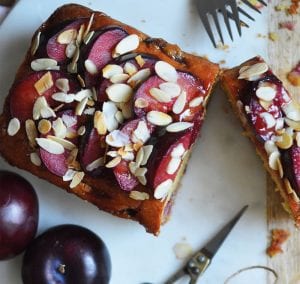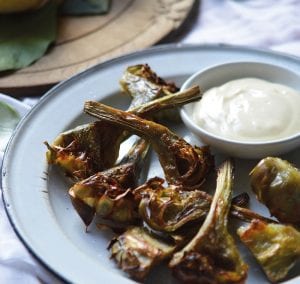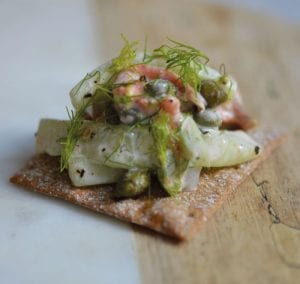Katie Kingsley serves up some thoroughly wholesome yet joyful goodies to make the most of your summer!
Broccoli Grain Bowl
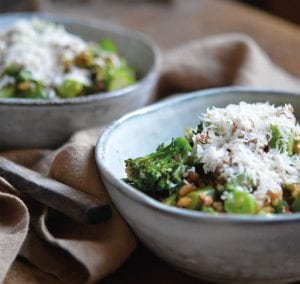
A great barbecue side or healthy packed lunch. The notion to chop broccoli into small pieces had never occurred to me but it works really well in this dish. The beauty of this recipe is that you can use any leftover veggies with any store cupboard grains. I like to serve this kind of side with pork loin or cubed chorizo but it also works well with fish or tofu.
Cook two packs (about 400g) of broccoli spears in salted boiling water for two minutes then drain and when cool enough to handle, chop into small pieces. Heat 4 tbsp of olive oil in a large pan and cook three finely sliced garlic cloves until turning golden with the zest of two lemons and a sprinkle of aleppo pepper or chilli flakes.
Add your broccoli for a few minutes then two cups of cooked grains such as quinoa, spelt, rice or chickpeas then warm through and season to taste. Add the juice of one or two lemons and serve in bowls topped with pecorino romano.
Dry Rub Oven Chicken with Herby Corn
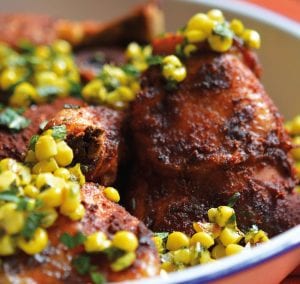
This is so delicious; sweet, smoky, tender and juicy chicken with tasty crispy skin. I love the combination of the naturally sweet corn and fresh, citrus herb oil, it really hits all the notes. I don’t think you can beat sauté potatoes to complete the dish. Food to feed the soul.
First brine your chicken for at least one and up to six hours. Place about 12 pieces of skin-on, bone-in chicken legs and thighs into a solution of 4 cups of water and 1/3 cup each of fine salt, soft brown sugar and white vinegar. Heat oven to 150˚C. Make spice rub by combining together 6tbsp of soft dark brown sugar, 4 tbsp of smoked paprika, 1 tbsp of mild chilli powder, 1 tbsp of celery salt, 1 tbsp of fine sea salt, 1 tbsp of garlic granules, 2 tsp of course red pepper powder, 2 tsp of course black pepper and half a grated nutmeg.
Drain your chicken from the brine and pat dry with kitchen paper. Use a large bowl to rub the spice mix all over the chicken, be generous with the rub (I use it all). Take a large piece of foil, big enough to fold back on itself and into a parcel and place the seasoned chicken on it, skin facing up then fold the foil over creating a tightly sealed parcel. Place this on a rack in the oven and cook for two hours. Once cooked, carefully open the parcel, remove the chicken onto a baking tray and pour all the juices into a small saucepan, reducing with a drizzle of honey until it coats a spoon.
Place the chicken under a medium-high heated grill for about five minutes so the skin chars at the edges. Remove corn from four husks and sauté in a pan with a knob of butter. Take a bunch of basil and half a bunch of mint and add to the small bowl of a processor with the juice of 1 lemon, 1 handful of pecorino romano, 100ml of rapeseed oil then blend and season to taste. Mix through the corn and serve alongside the chicken with a drizzle of the reduction.
Cherry Slices

Biscuity bottom, buttery and nutty with bursts of sweet cherry…
Heat oven to 190˚C. Grease and line a nine-inch, square brownie tin. Make your crust by mixing together 100ml of melted unsalted butter with 70g of golden caster sugar, 1/4 tsp of vanilla extract, 130g of plain flour and a pinch of salt. Press your crust into the base of the tin and bake for 20 minutes until golden. Remove from oven and leave in tin to cool whilst you prepare the filling. Melt 115g of unsalted butter in a small saucepan and cook, stirring for about six minutes until it turns a nutty brown (careful not to burn). Pour into a bowl to cool.
In a medium bowl whisk together 100g of golden caster sugar, 30g of plain flour, two large eggs, 1 tsp of almond extract and a pinch of salt then add your browned butter gradually while whisking until blended. Remove the stones from 450g of cherries and arrange in the bottom of your tin over the cooled crust. Pour over your filling carefully then cook for 30 minutes or until the top is puffed and golden and a tester comes out clean. Once cooled, slice and serve.










